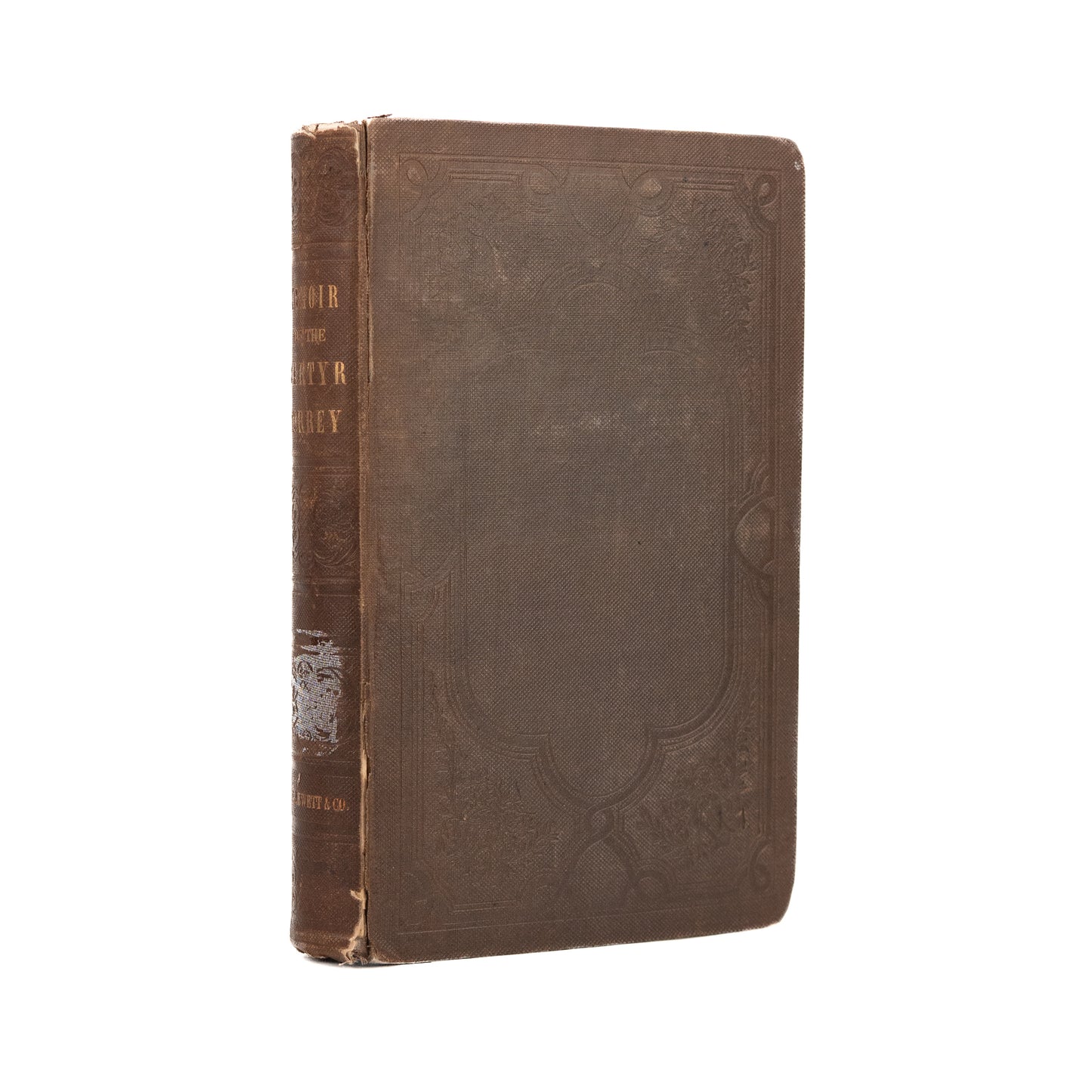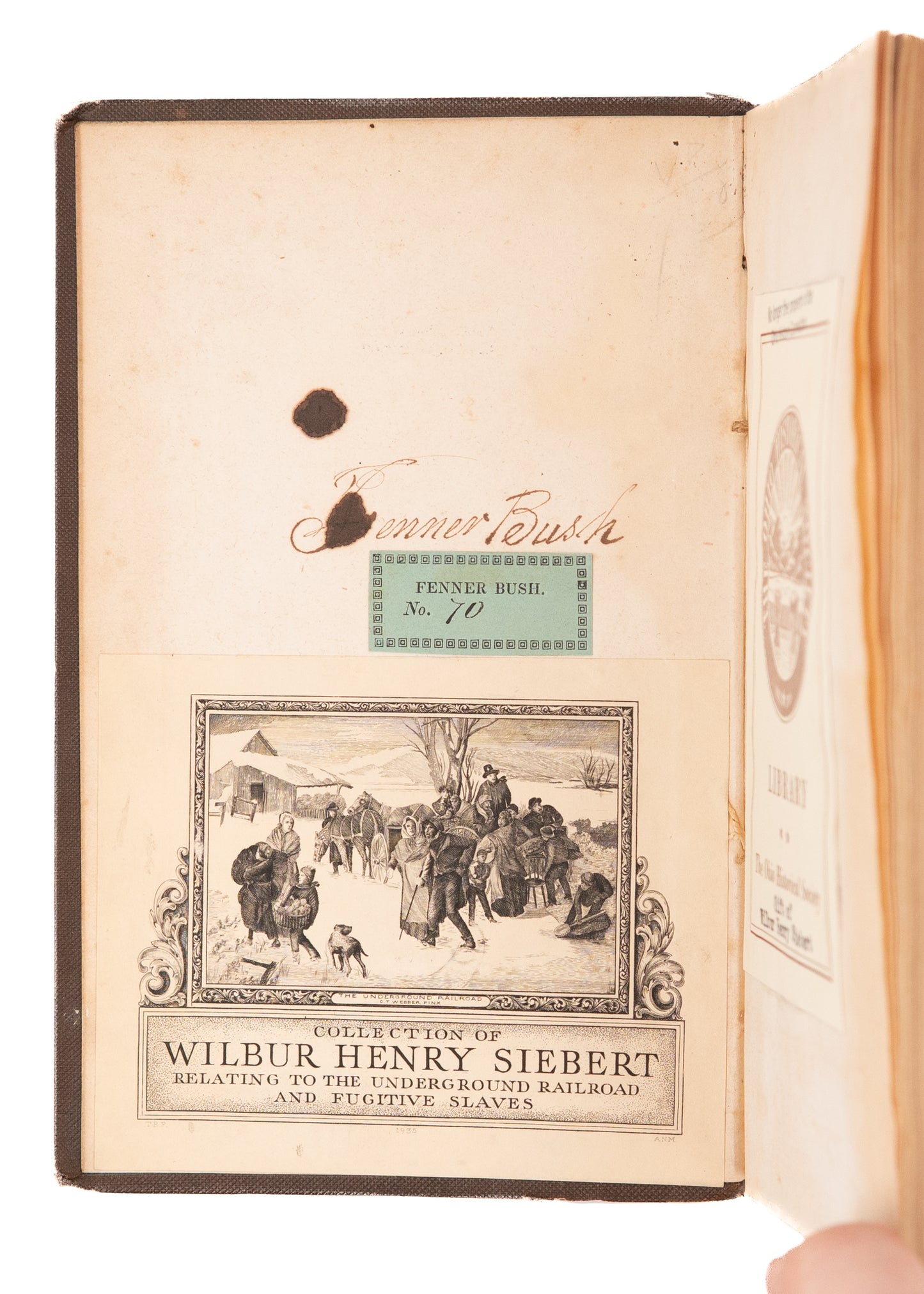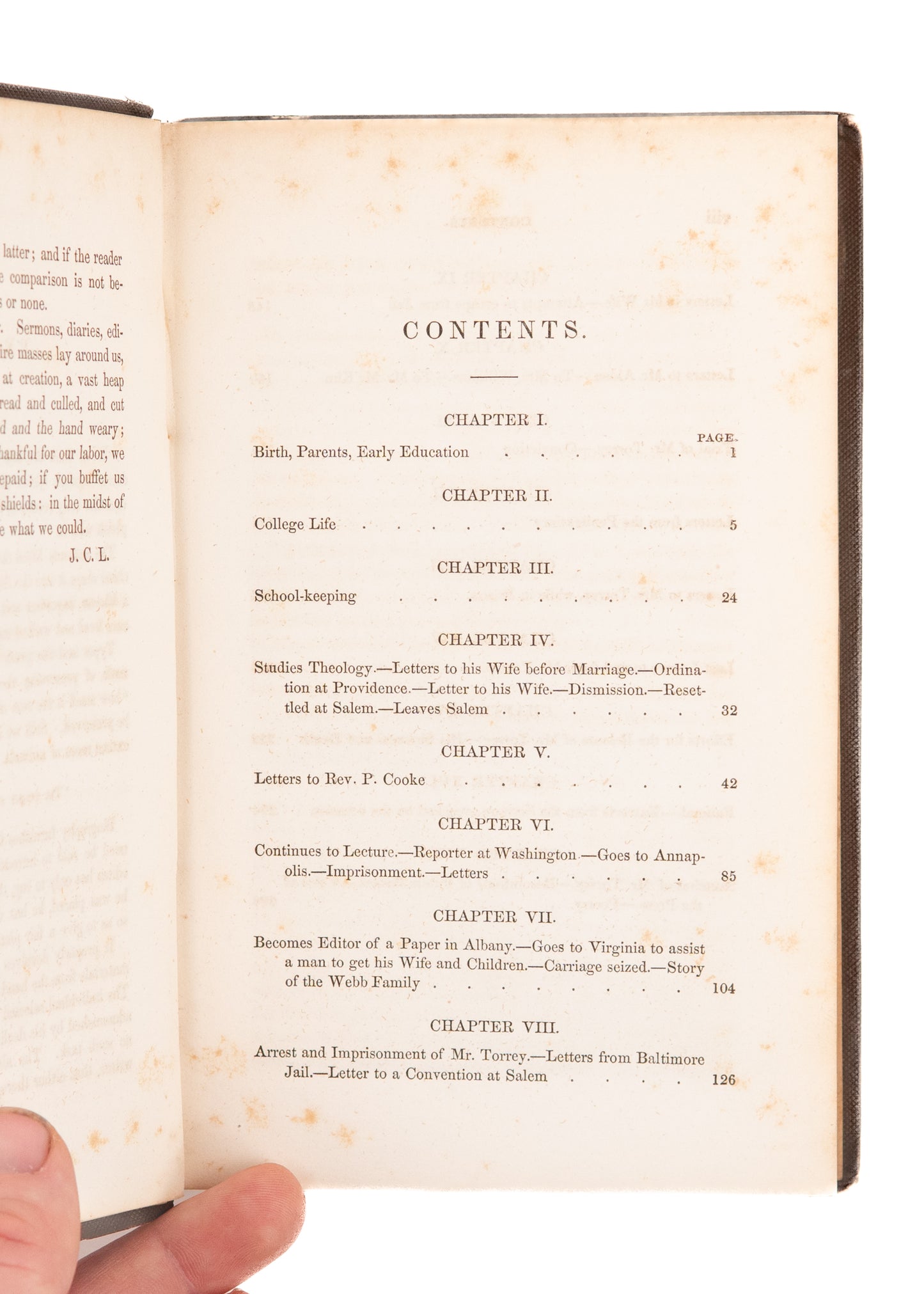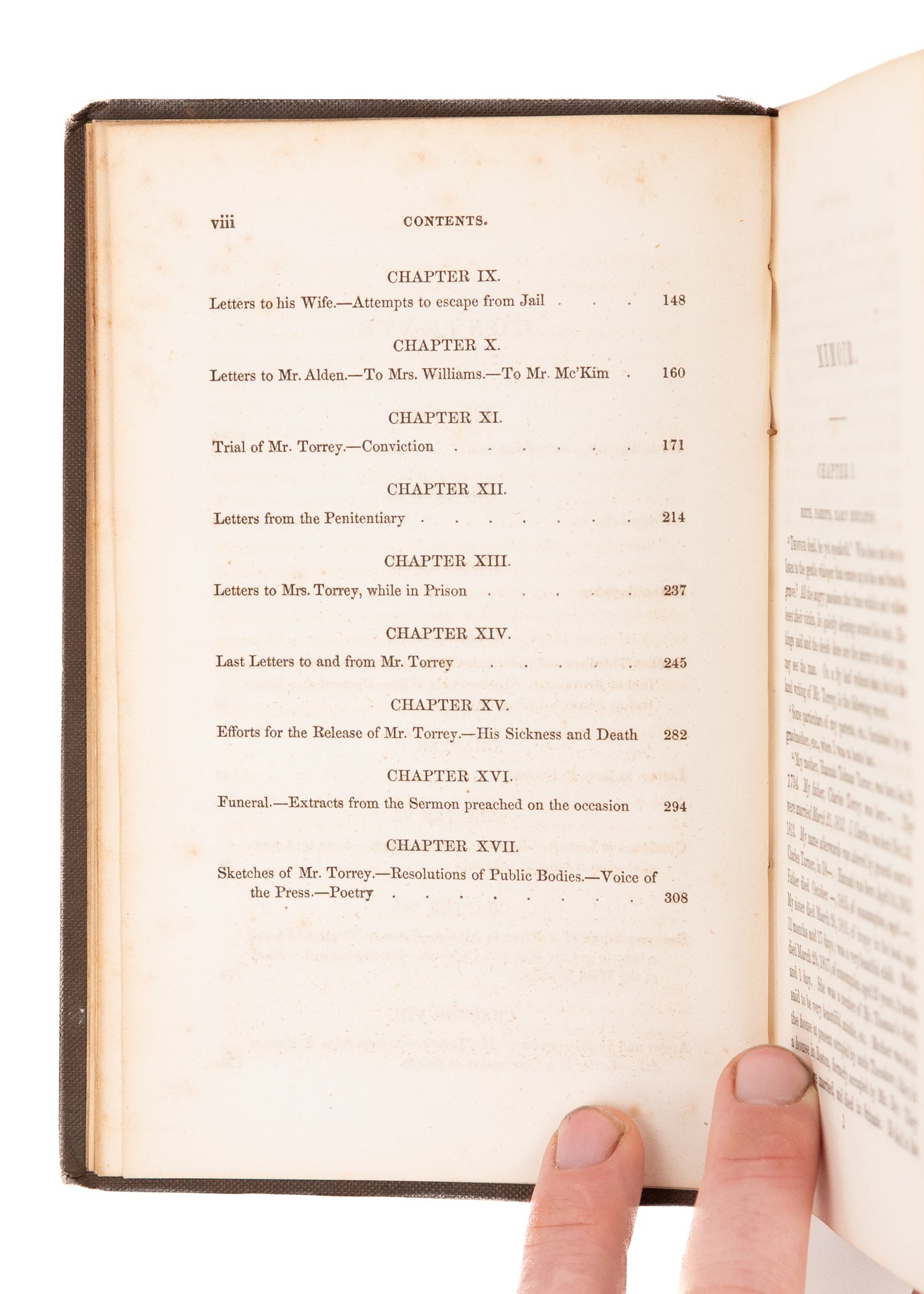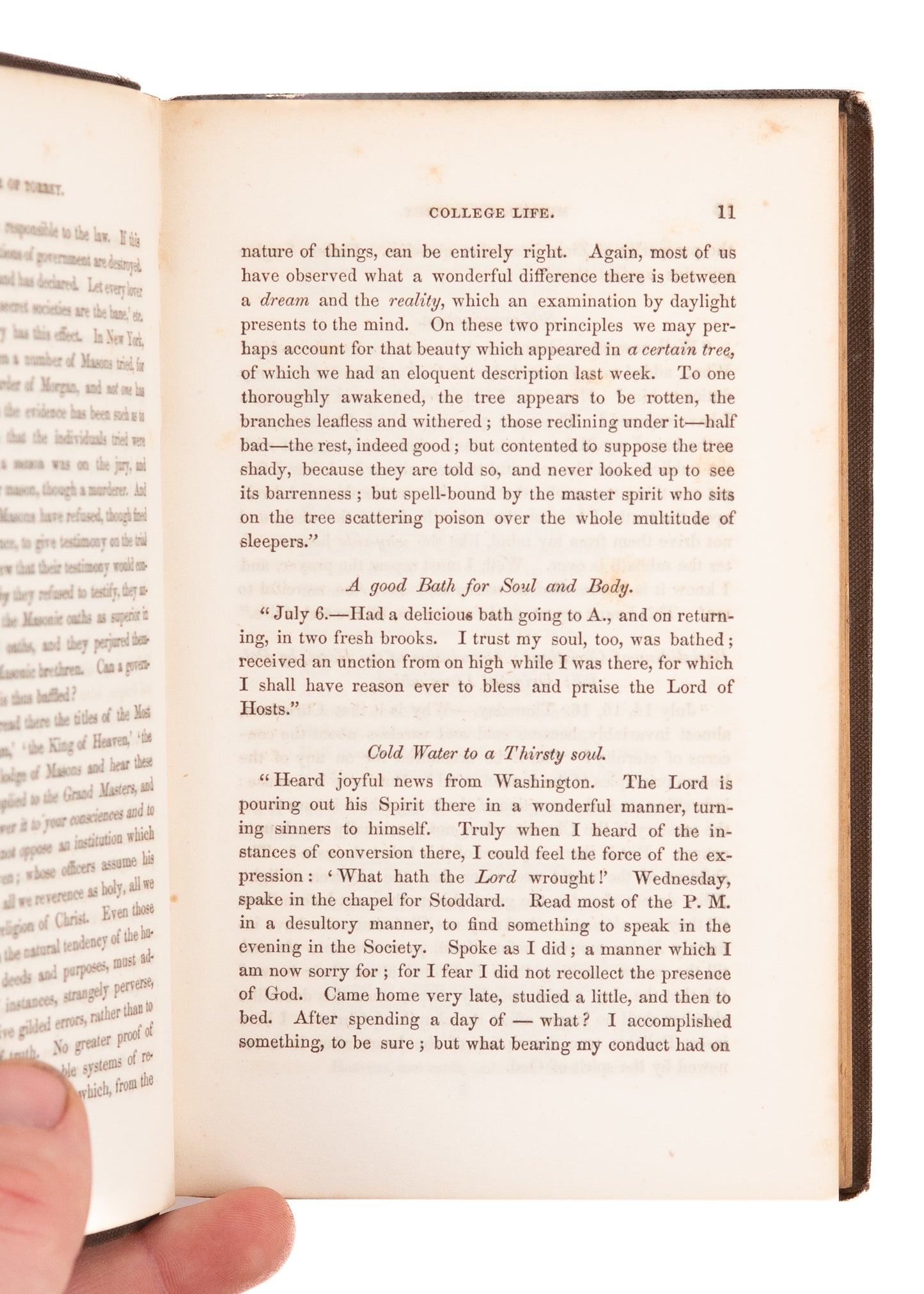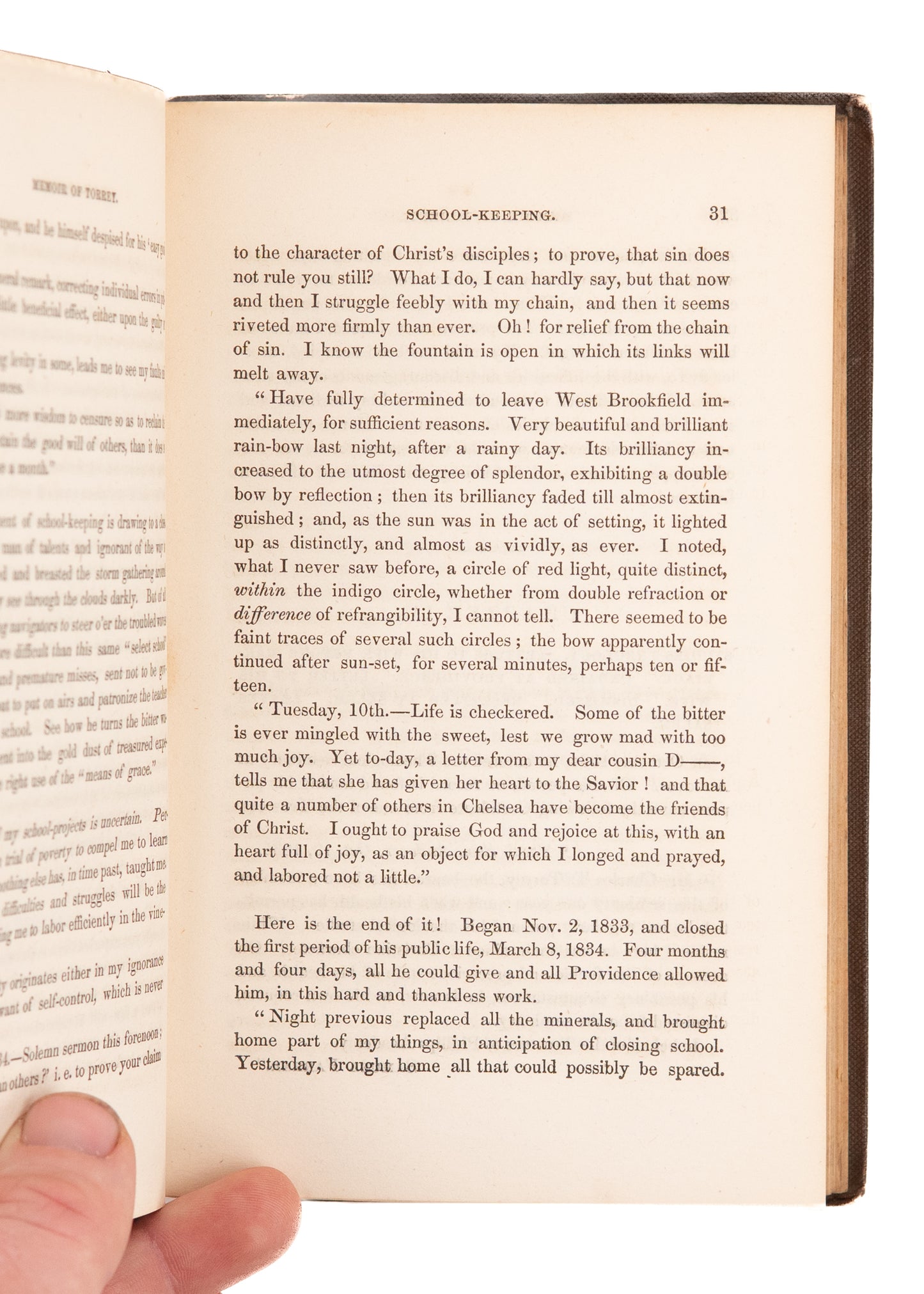Specs Fine Books
1847 UNDERGROUND RAILROAD. Memoir of Rev. Charles T. Torrey. Leader & Martyr of Abolitionism.
1847 UNDERGROUND RAILROAD. Memoir of Rev. Charles T. Torrey. Leader & Martyr of Abolitionism.
Couldn't load pickup availability
An important biography of one of the founders and most significant leaders of the Underground Railroad. Additionally, the present copy was the personal copy of Wilbur Henry Siebert, one of the most significant historians of the Underground Railroad and author of The Underground Railroad from Slavery to Freedom [1899]. Additionally the copy of New England legislator and abolitionist, Fenner Bush.
Charles Turner Torrey [1813-1846] was one of the assertive of the early abolitionists, urging American abolitionism toward more aggressive political and radical activities. Most signally he was involved with establishing the first highly organized lines of the Underground Railroad and personally freed approximately 400 slaves.
Torrey was also one of the first of the New England abolitionists to begin partnering closely with free blacks. John Brown cited Torrey as one of the three abolitionists he looked to as models for his own efforts.
An associate of William Lloyd Garrison, they split over whether the causes of women's equality and the abolition of slavery should be bundled as a singular movement or handled consecutively. This led to Torrey's founding the New Organization [so-named to contrast with Garrisons "old" organization]. They were more aggressive. By July 1839, almost 500 delegates met in Albany to discuss the formation of a political party devoted exclusively to abolitionism. Finally, on April 1, 1840, at another meeting in Albany, the Liberty Party was formed. Torrey was one of the vice-presidents of the organizing meeting. Following the meeting, he became the Liberty Party organizer for Massachusetts.
By the end of 1841, Torrey had tired of the slow pace of political abolitionism and went to Washington, D.C., as a reporter for several abolitionist newspapers. It seems likely that he had already formulated a plan to free slaves. He immediately began attending black churches and befriending abolitionist members of Congress, especially Joshua Giddings of Ohio. In January 1842, Torrey, as a reporter, attended a convention of Maryland slaveholders in Annapolis, where he was arrested, charged with writing "incendiary" material, and jailed for four days.
Following his release from jail, Torrey continued using his cover as a reporter but immediately organized an elaborate Underground Railroad route from Washington to Baltimore, Philadelphia, and Albany. He worked closely with Thomas Smallwood, a free black. Together, they solicited slaves in Washington to run away, then transported them north to freedom in Pennsylvania. There, they were conducted through a series of safe houses, mostly owned by Quakers, to Philadelphia, Albany, and ultimately, for many, Canada. Torrey and his colleagues rented horses and wagons and often transported as many as 15 or 20 slaves at a time. Torrey and Smallwood specifically targeted slaves owned by Southern members of Congress and important political figures so as to cause as much public disruption as possible. Professor Stanley Harrold offered the first academic account of Torrey's slave-freeing exploits.
By October 1842, Torrey had been targeted by the police in Washington for his activities, so he moved to Albany. Smallwood continued to recruit slaves to run away until the spring of 1843, by which time they had freed approximately 400 slaves. Smallwood then also moved north because of the danger of arrest.
Much of the funding for Torrey and Smallwood's work apparently came from Gerrit Smith, a wealthy abolitionist from upstate New York. In November 1843, Torrey and Smallwood returned to Washington, despite both being wanted by the police, and narrowly escaped arrest. Smallwood thereafter settled in Toronto, but Torrey went to Baltimore, where he continued the freeing of slaves. Finally, in June 1844, Torrey was arrested and put in jail. He was said to have been armed with two pistols at the time of his arrest.
Torrey was charged with three counts of stealing slaves. He initially regarded his arrest as an opportunity to challenge the constitutional legitimacy of slaveholding in general; if it was not legitimate, then freeing slaves would not be a crime. By September 1844, it was clear that this strategy was not going to work, so he attempted to break out of jail and almost succeeded. He wrote to his wife that the jailbreak was foiled by the betrayal of a fellow prisoner, by the name of Dryer, who was, as it happened, a "negro trader" in prison on charges of counterfeiting money.
In December, Torrey was tried, convicted, and sentenced to six years in the state penitentiary. Prison conditions caused the return of Torrey's tuberculosis. Throughout New England, including Lowell, Massachusetts, people established Torrey Committees to raise money in support of Torrey's legal defense. Clemency requests were made by Linus Child [CEO of the Boott Cotton Mills] Lowell, Massachusetts to Governor Francis Thomas of Maryland, which were denied initially; however, when the Governor gave in and sent his pardon, the letter arrived to the prison on the same day Torrey died, May 9, 1846.
So central was Torrey to the cause, that it was J. C. Lovejoy, brother of martyred abolitionist Elijah P. Lovejoy, who wrote Torrey's memoir.
Lovejoy, J. C. Memoir of Rev. Charles T. Torrey, Who Died in the Penitentiary of Maryland, where he was Confined for Showing Mercy to the Poor. Boston. Published by John. P. Jewett & Co. 1847. 364pp.
A good - copy, bound in cloth, generally solid, with light foxing. Ex library with some fraying at chipping at extremities.
Share
